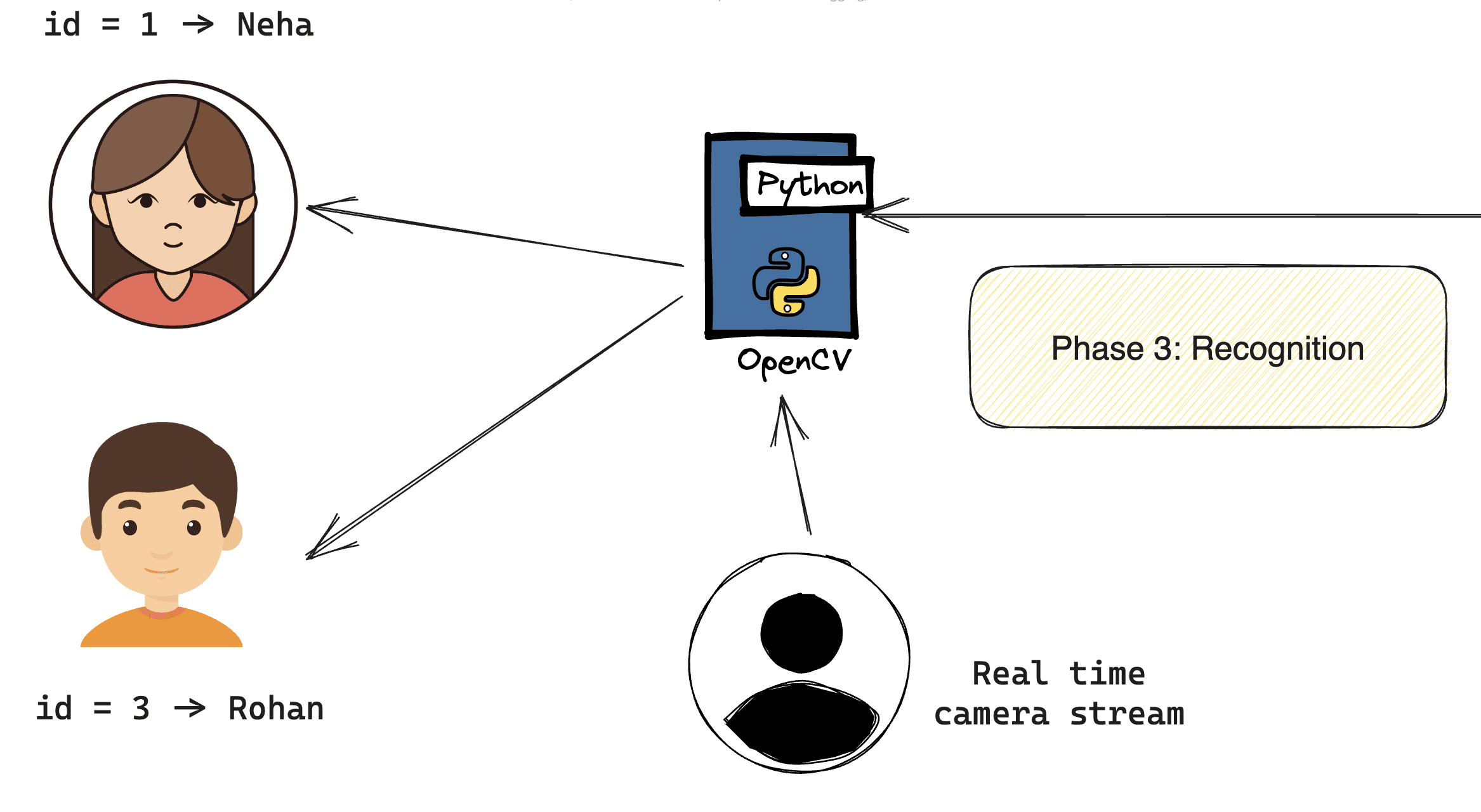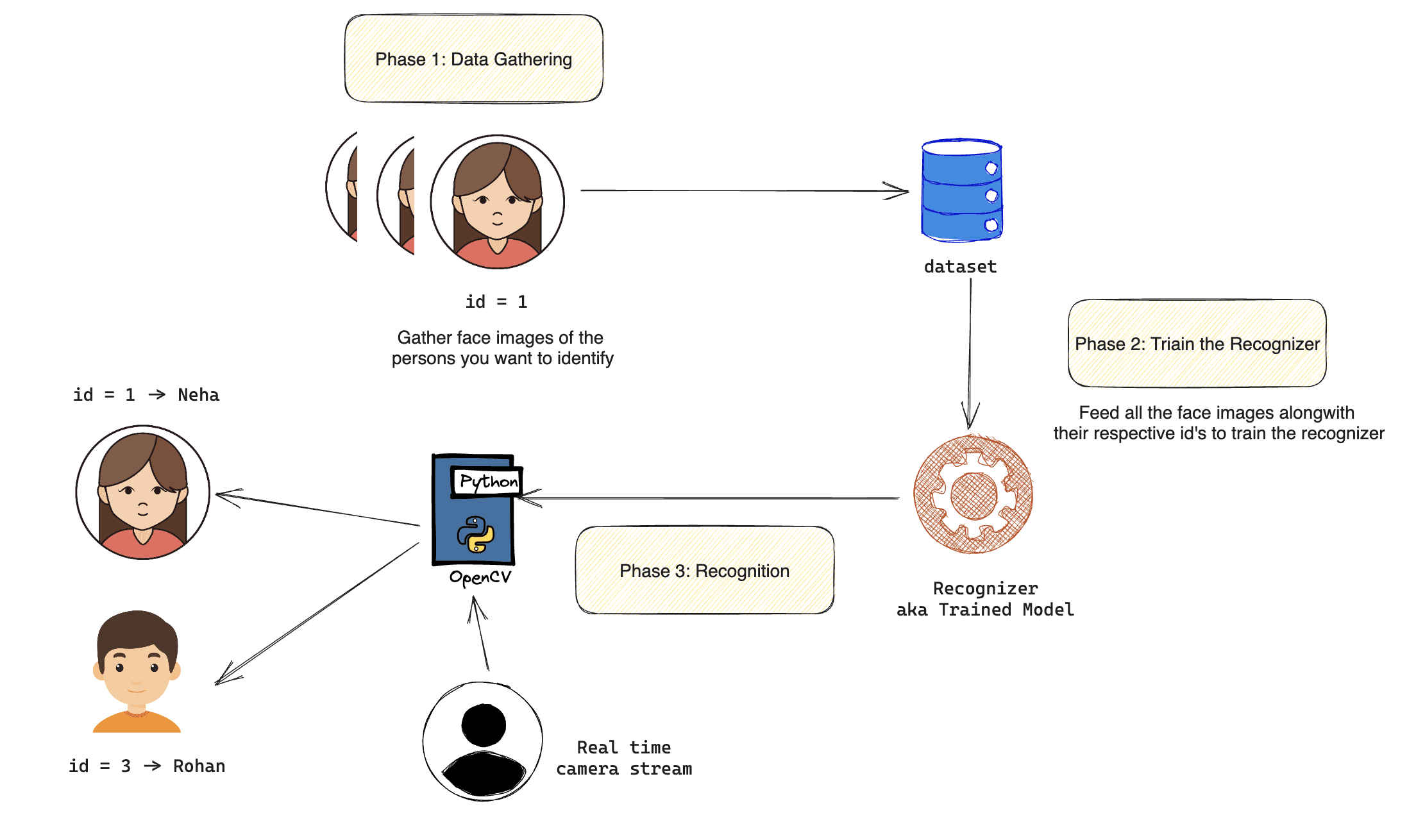Face Off: Which Face Recognition Model Reigns Supreme?
Dec 5, 2023
Dec 5, 2023
Dec 5, 2023


Introduction
In the burgeoning field of facial recognition, newbies are often confronted with a plethora of models to choose from for their projects or research. This plethora not only confuses beginners but also poses a challenge for those seeking to optimize their existing systems. If you're an aspiring engineer navigating this landscape, you're in the right place. This article will compare three popular face recognition models—face_recognition, FaceNet, and Local Binary Patterns Histograms (LBPH)—to help you make an informed decision for your next project or research endeavor.
A Bird’s Eye View of the Face Recognition Landscape
First things first: what does the architecture of a typical face recognition system look like? Generally, a standard workflow is followed:
Load the Classroom Image: A snapshot of the classroom is the initial input.
Face Detection: Faces in the image are identified and bounded by boxes.
Face Preprocessing: Each face is prepared for recognition.
Feature Extraction: Key features of each face are obtained.
Face Recognition: The features are compared against a database to recognize each individual.

The Nitty-Gritty of Individual Models
face_recognition
What is it?
This is a Python library that builds on the dlib library. It leverages Histogram of Oriented Gradients (HOG) features and k-Nearest Neighbors (k-NN) classifiers for recognizing faces.
How Does it Work?
The face detection mechanism relies on HOG features combined with a linear classifier. Once the faces are detected, redundant detections are eliminated using non-maximum suppression.
How Accurate Is It?
The accuracy varies depending on the quality of training data and implementation. While it provides reasonable accuracy, it doesn’t quite match up to the deep learning-based approaches like FaceNet.
FaceNet
What is it?
Developed by Google, FaceNet employs deep convolutional neural networks (CNNs) to extract high-dimensional facial embeddings from raw pixel data.
How Does it Work?
Contrary to face_recognition, FaceNet doesn’t have a built-in face detection mechanism. You'll need to integrate it with other algorithms like Haar cascades or MTCNN for face detection.
How Accurate Is It?
FaceNet is renowned for its high accuracy and robustness. It is often the go-to for applications requiring state-of-the-art facial recognition capabilities.
Local Binary Patterns Histograms (LBPH)
What is it?
LBPH uses local binary patterns to capture texture features from faces. It’s an algorithm that’s been around the block but still holds its own.
How Does it Work?
Like FaceNet, LBPH doesn't have an inbuilt face detection mechanism. It relies on external methods to detect faces which are then processed to extract texture features.
How Accurate Is It?
Though computationally less intensive, its accuracy may not be as high as FaceNet. LBPH is often used for simpler, smaller-scale applications where computational resources are a limitation.
Comparative Insights for Classroom Attendance Systems
Strengths and Weaknesses
face_recognition: Great for quick deployment but may struggle with varied lighting and poses.
FaceNet: Offers high accuracy but requires significant computational resources.
LBPH: Efficient and simple, but less accurate when dealing with different lighting and facial expressions.
Demo Video
Check out this step-by-step tutorial that captures our journey to reaching 100% accuracy using FaceNet.
Key Takeaways
Both K-NN with face_recognition and FaceNet offer their unique advantages and trade-offs. While K-NN performs well with large datasets, FaceNet shines with limited data and varying facial angles.
Conclusion
The realm of facial recognition is ever-evolving, with a myriad of algorithms to choose from. The choice of a facial recognition model will invariably depend on the application, availability of computational resources, and the nuances of the facial data involved. For aspiring engineers interested in this field, each model offers a rich array of challenges and opportunities for research and implementation.
Introduction
In the burgeoning field of facial recognition, newbies are often confronted with a plethora of models to choose from for their projects or research. This plethora not only confuses beginners but also poses a challenge for those seeking to optimize their existing systems. If you're an aspiring engineer navigating this landscape, you're in the right place. This article will compare three popular face recognition models—face_recognition, FaceNet, and Local Binary Patterns Histograms (LBPH)—to help you make an informed decision for your next project or research endeavor.
A Bird’s Eye View of the Face Recognition Landscape
First things first: what does the architecture of a typical face recognition system look like? Generally, a standard workflow is followed:
Load the Classroom Image: A snapshot of the classroom is the initial input.
Face Detection: Faces in the image are identified and bounded by boxes.
Face Preprocessing: Each face is prepared for recognition.
Feature Extraction: Key features of each face are obtained.
Face Recognition: The features are compared against a database to recognize each individual.

The Nitty-Gritty of Individual Models
face_recognition
What is it?
This is a Python library that builds on the dlib library. It leverages Histogram of Oriented Gradients (HOG) features and k-Nearest Neighbors (k-NN) classifiers for recognizing faces.
How Does it Work?
The face detection mechanism relies on HOG features combined with a linear classifier. Once the faces are detected, redundant detections are eliminated using non-maximum suppression.
How Accurate Is It?
The accuracy varies depending on the quality of training data and implementation. While it provides reasonable accuracy, it doesn’t quite match up to the deep learning-based approaches like FaceNet.
FaceNet
What is it?
Developed by Google, FaceNet employs deep convolutional neural networks (CNNs) to extract high-dimensional facial embeddings from raw pixel data.
How Does it Work?
Contrary to face_recognition, FaceNet doesn’t have a built-in face detection mechanism. You'll need to integrate it with other algorithms like Haar cascades or MTCNN for face detection.
How Accurate Is It?
FaceNet is renowned for its high accuracy and robustness. It is often the go-to for applications requiring state-of-the-art facial recognition capabilities.
Local Binary Patterns Histograms (LBPH)
What is it?
LBPH uses local binary patterns to capture texture features from faces. It’s an algorithm that’s been around the block but still holds its own.
How Does it Work?
Like FaceNet, LBPH doesn't have an inbuilt face detection mechanism. It relies on external methods to detect faces which are then processed to extract texture features.
How Accurate Is It?
Though computationally less intensive, its accuracy may not be as high as FaceNet. LBPH is often used for simpler, smaller-scale applications where computational resources are a limitation.
Comparative Insights for Classroom Attendance Systems
Strengths and Weaknesses
face_recognition: Great for quick deployment but may struggle with varied lighting and poses.
FaceNet: Offers high accuracy but requires significant computational resources.
LBPH: Efficient and simple, but less accurate when dealing with different lighting and facial expressions.
Demo Video
Check out this step-by-step tutorial that captures our journey to reaching 100% accuracy using FaceNet.
Key Takeaways
Both K-NN with face_recognition and FaceNet offer their unique advantages and trade-offs. While K-NN performs well with large datasets, FaceNet shines with limited data and varying facial angles.
Conclusion
The realm of facial recognition is ever-evolving, with a myriad of algorithms to choose from. The choice of a facial recognition model will invariably depend on the application, availability of computational resources, and the nuances of the facial data involved. For aspiring engineers interested in this field, each model offers a rich array of challenges and opportunities for research and implementation.